Wish
Sonatine For Flute And Piano
-
Ships in 1 to 2 weeks
Details
Description
SKU: PR.114417360
Sonatine For Flute And Piano. Composed by Valerie Coleman. Sws. Contemporary. Set of Score and Parts. With Standard notation. Composed 2015. 24+8 pages. Duration 12 minutes. Theodore Presser Company #114-41736. Published by Theodore Presser Company (PR.114417360).ISBN 9781491101971. UPC: 680160631964. 9x12 inches.
Valerie Coleman’s first work for flute and piano, WISH, was inspired by a poem of the same name. WISH is a dramatic tone poem for flutist and pianist alike, depicting the Middle Passage in which Africans were trafficked across the Atlantic by tall ships to be sold into slavery. Coleman’s 12-minute sonatine serves as a powerful recital work, expressive and with thrilling impact. For advanced performers. VALERIE COLEMANBorn in Louisville, Kentucky, VALERIE COLEMAN began music studies at 11 and made a hobby of composing. By 14, she had already written three full-length symphonies and had won local and state flute competitions. Coleman is the founder of Grammy-nominated wind quintet Imani Winds, an ensemble widely recognized for their significant contributions to the chamber music repertoire.Coleman’s chamber works have taken their place in standard wind repertoire and received honors such as her UMOJA being listed as one of the “Top 100 American Chamber Works” by Chamber Music America. Her music has been heard on internationally syndicated radio shows including NPR’s Performance Today and All Things Considered, Minnesota Public Radio’s St. Paul Sunday, RadioFrance, and Sirius XM satellite radio. She has been featured composer for Chamber Music Society of Lincoln Center, a composer fellow for the Brooklyn Philharmonic, and composer teaching artist for Young Audiences of New York. Commissions have come from the Hartford Symphony, San Francisco Chamber Symphony, Flute and Clarinet Duo Consortium, the CBDNA, the historic Saint Peter’s Lutheran Church in NYC, the National Flute Association Collegiate Flute Choir, and Blackledge Music, Inc. Coleman holds degrees from Boston University and Mannes College of Music.As a flutist, Coleman has given masterclasses at conservatories, festivals, and schools throughout North America. She studied flute with Julius Baker, Alan Weiss, Judith Mendenhall, and Mark Sparks; composition with Martin Amlin and Randall Woolf; and has served on the faculty of The Juilliard School’s Music Advancement Program, Interschool Orchestras of New York, Chamber Music Society of Lincoln Center Teaching Artist Program.
WISH is based upon a historical journey called the Middle Passage: the selling, trading, and transporting of enslaved Africans from Africa to the New World, as referenced in the poem of the same title by Fred D’Aguiar.Because WISH has an abundance of moments that allow both flute and piano to interpret rhythm and melody – as would happen in a djembe drum pattern or in the sound of a soulful wailing voice, the performers are encouraged to lightly relax standard classical phrasings, in favor of an organic interpretation. The different sections are indicated by markings like Defiant or Chaotic, allowing the music to be much more than a tempo or mood change.The vision of tall ships begins the musical poem; the pianist uses the sustain pedal to augment the flutist’s tone to create a distant echo effect. A dirge with blues elements follows, becoming more and more insistent, eventually transforming into the section marked With Fighting Desperation. Slaves are being herded onto the ships. Whips are cracked and slaves are dragged, pushed, and beaten. This frantic yet soulful accompanied cadenza is a desperate but futile fight to stay on homeland soil. The cadenza finally shrieks into an aggressive rhythmic ostinato in the piano part, reflecting the pride and culture within the many tribes on board. There is a sense of moving on the water and sailing into the unknown (depicted within the relentless triplets of the Movendo section). Winding Back the Clock calms the pace and fight down into a quieter moment, marked as Defiant. Trafficked individuals occasionally resorted to terminal starvation or suicidal jumps off the ship as the very last thing that could be done to escape captivity and claim their personal sovereignty. In this section, the act of defiance starts with an inner contemplation, awakened and stirred up by an ostinato pattern found in the piano. Here, there is a growing dialogue between coercion and resistance, depicting the slavers’ attempts to discourage suicide (as suicide represented a loss of profit) and the slaves’ fierce determination to reclaim self-worth.At the most passionate moment of Defiant, I envision an enslaved woman experiencing a still moment in time, a profound sweetness of looking onto her newborn after giving birth (one note each on both flute and piano). What follows is the section called Still, a hint of what is to come; a precursor to African-American spirituals and the blues. The mother knows that she is about to lose her child. The accompanied cadenza that follows continues a fierce struggle. The newborn is ripped out of the mother’s arms and murdered (a common-place occurrence, as babies and toddlers were too labor-intensive to keep aboard the slave ship).WISH finishes with a section marked With a Fierce Determination to Survive. This ending communicates a dual reflection: 1) a renewed sense of self-preservation, the embrace and healing possibility in a multitude of cultures brought from Africa despite captivity, and 2) an echo of D’Aguiar’s poem as it refers to turning the ships around and changing history, thereby avoiding the sound of the whip “to deafen our ears for centuries.” Through repetitive leaps in the flute and driving lower voiced stomps in the piano, the ending shouts the poem’s final line:“No Atlantic road of bones from peopleDumped into the sea to form a wake.”Program Note by Valerie ColemanEdited by Anne Pollack.
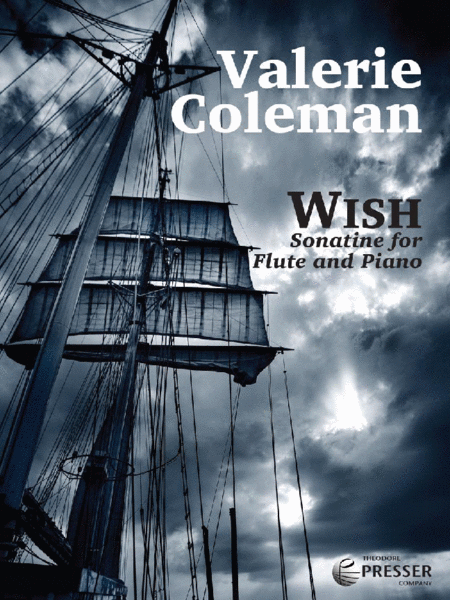
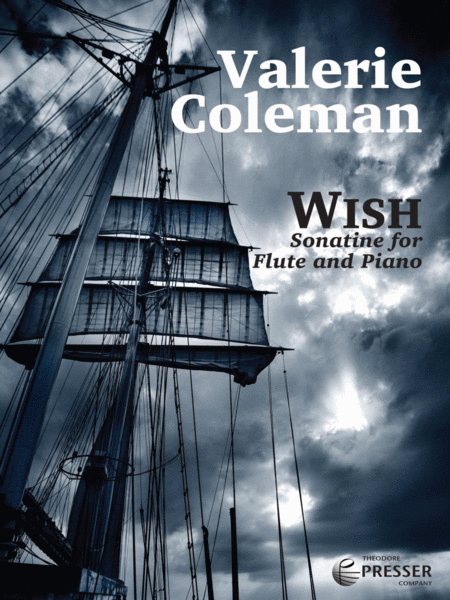
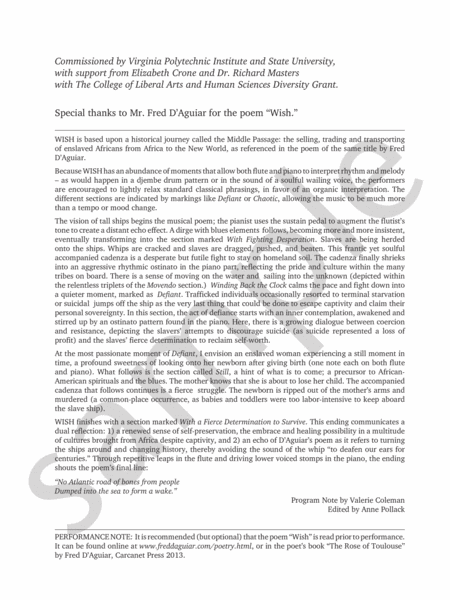
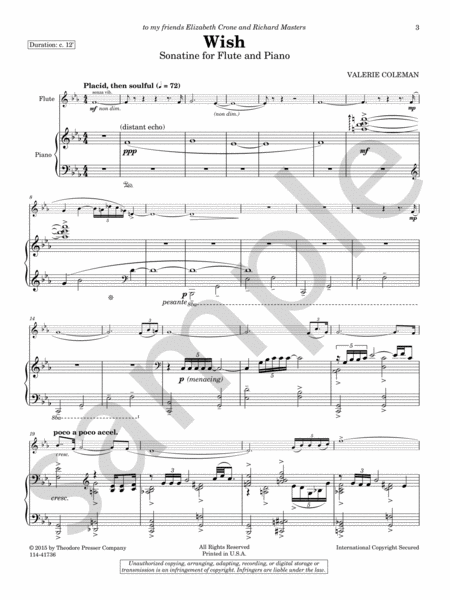
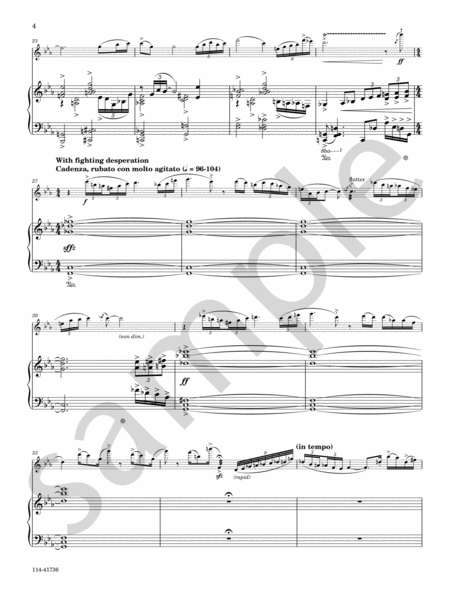
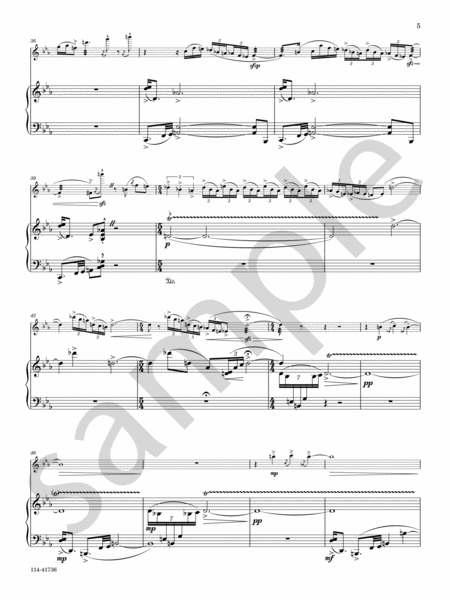
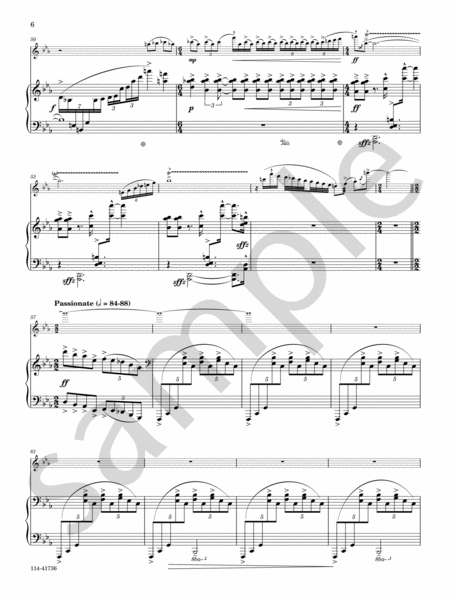
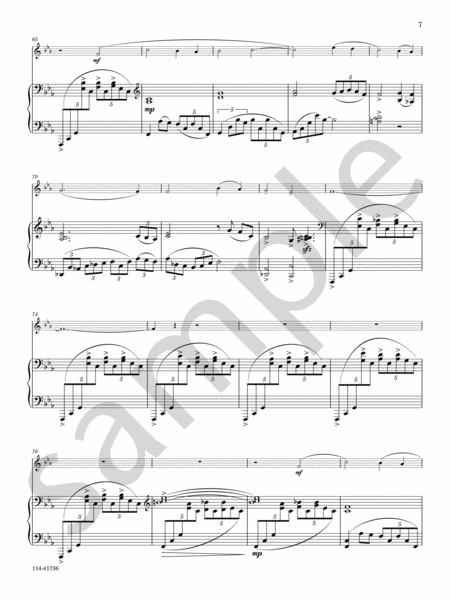
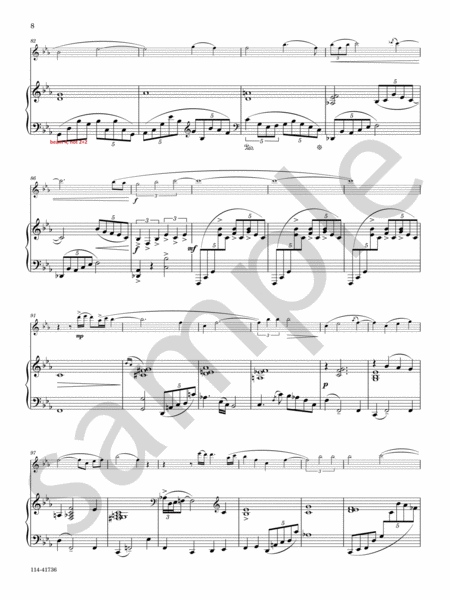
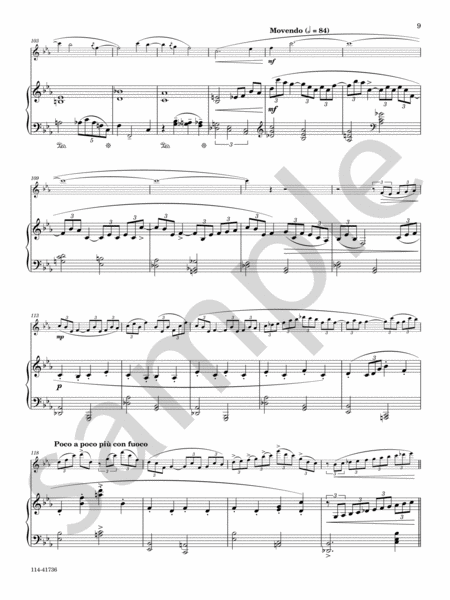
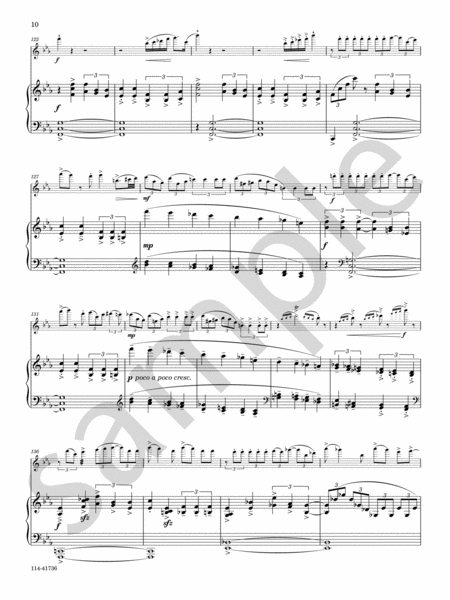
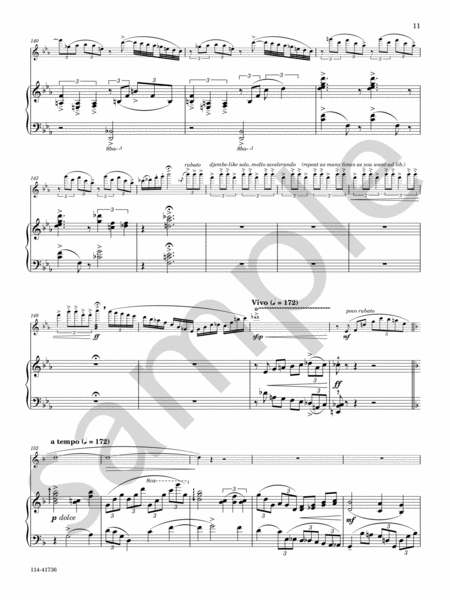
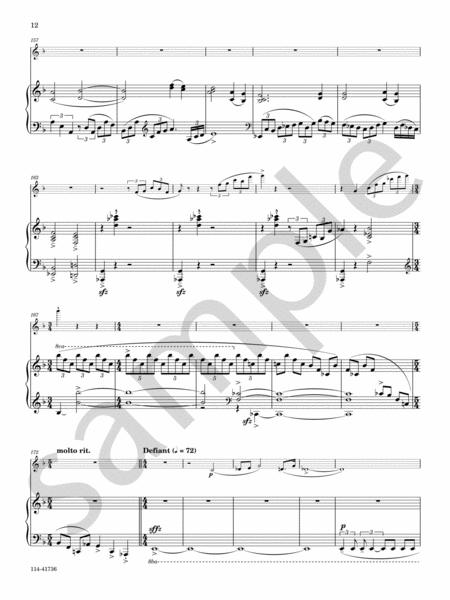
 Share
Share